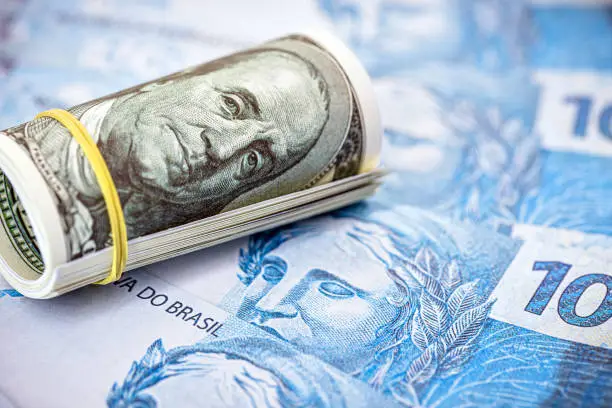Dollar Experiences Slight Decline Against Brazilian Real, Capping Fifth Week of Gains
RIO DE JANEIRO – June 21, 2024
In Friday’s foreign exchange markets, the U.S. dollar exhibited a modest dip against the Brazilian real, closing at R$5.441—a minor 0.39% retreat. Despite this single-day downturn, the dollar capped its fifth consecutive week of gains, reflecting a broader trend driven by global economic uncertainties and domestic fiscal concerns.
On the preceding day, the dollar touched a significant high, marking its strongest level in nearly two years. By week’s end, the greenback achieved an overall weekly increment of 1.1%. The backdrop to this upward trajectory included the U.S. decision to maintain the benchmark interest rate at 10.50%, a move closely analyzed by economists and financiers.
Historical parallels can be drawn to previous periods of fiscal tension and monetary policy adjustments, such as the Fed’s rate hikes during the 2010 Eurozone debt crisis. Similarly, current currency fluctuations are heavily influenced by broader economic performances globally and fiscal policies within individual nations.
Accompanying these dynamics was a robust performance of the U.S. dollar in international markets, buoyed by concerns over an economic slowdown in Europe. This climate of caution was further fed by unexpected political movements, including recent election advancements in France. Collectively, these elements fostered a cautious trading environment.
In the Brazilian domestic currency market, the dollar concluded the day at R$5.440 for buying and R$5.441 for selling. Futures mirrored this trend, slipping 0.41% to 5,435 points by the market’s close. The Central Bank’s strategy to release all available currency swaps for August in the morning hours was a tactical response as part of its broader currency management efforts.
Initially, the dollar opened at a lower rate but saw a resurgence by midday, reacting to a complex mix of domestic and global policy influences. Currency analysts pointed to internal fiscal uncertainties as key factors affecting the real’s stability, compounded by criticisms of monetary policy from national leaders.
Highlighting policy dynamics, the dollar briefly touched R$5.4623 by midday following critical commentary on interest rate strategies, underscoring market sensitivity to policy discourse. Despite a downturn later in the day, the dollar maintained its gains for the week, emphasizing the impact of political dialogue on market behavior.
Looking ahead, financial markets are closely watching potential leadership transitions at the Central Bank, which could signal shifts in inflation targets and monetary policy approaches. Internationally, the dollar displayed strength against both major and emerging market currencies, with the dollar index rising by 0.21%.
This snapshot of currency movements is positioned within the broader context of global economic conditions and national policy debates. It highlights the significant influence of these factors on financial markets and investor sentiment, offering insight into the interconnectedness of fiscal policies and economic stability.
Source: Rio Times
